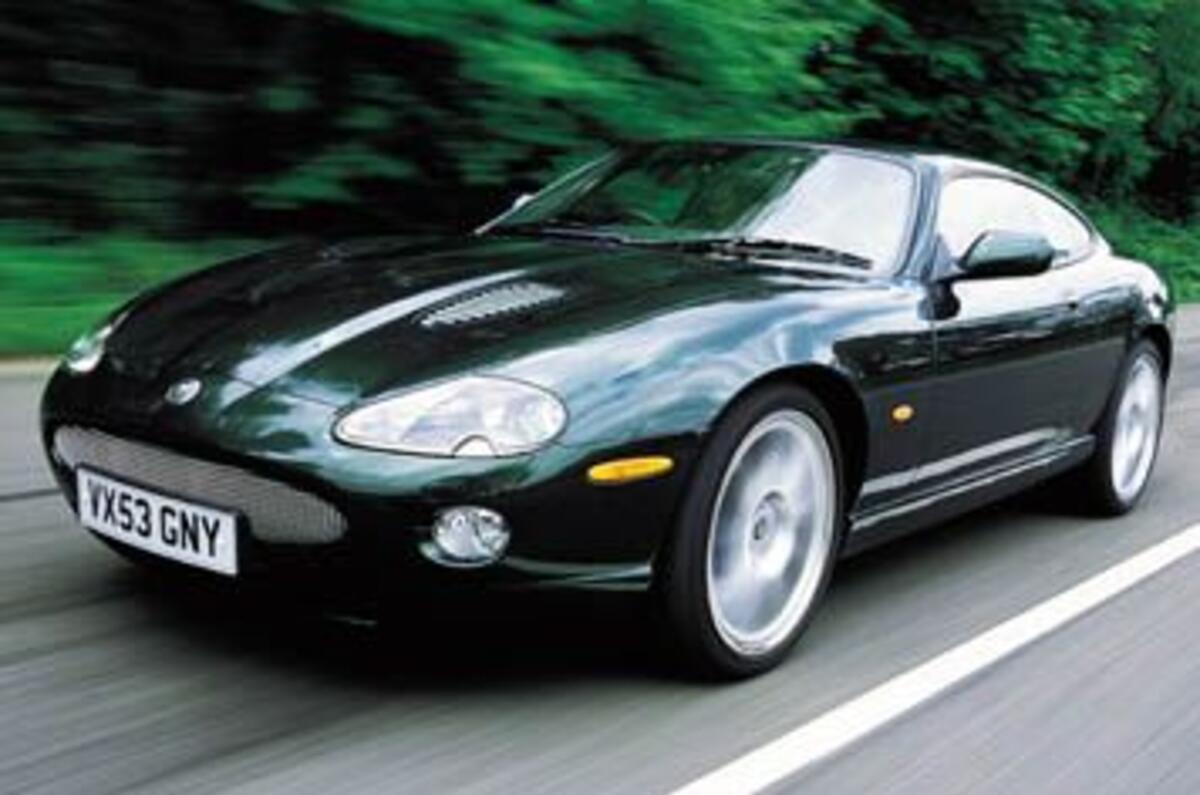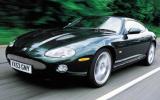If its recent offerings are anything to go by, a look into the design department at Jaguar might reveal a huge banner proclaiming ‘If it ain’t broke, don’t fix it’. Under the skin it might be much changed, but the facelifted S-type we road tested three weeks ago is a festival of minor tweakery on the outside, and now we have the ‘new’ 2004 XK8 and XKR, a stop-gap introduced to tide the sporting coupé range over until its all-aluminium replacement appears late next year.
It’s a game of spot the difference: new front bumper, bigger exhausts and a lip spoiler for the XK8, while the supercharged XKR gets a deep, sculpted air dam, a new mesh grille, enlarged rear spoiler, side skirts and a beefier rear bumper to give a more butch stance, plus there is now a quartet of tailpipes à la Mercedes SL55 AMG. But the fact that the looks are largely unchanged is no bad thing. The XK has been with us since ’96, and wears its eight years well. The styling tweaks might be small, but the XKR, in particular, benefits from the gentle massage, which adds a much-needed shot of aggression to its sinewy lines. Jaguar claims that the lower front end improves the aerodynamics too.
So does it drive any differently? Not really, though it is all too easy to hit the ground with that deep new front spoiler as you tackle speed humps in town – even the stiffer sports suspension fitted to our test car failed to stop that long front overhang pitching into the deck when traffic calming was attacked at anything more than tortoise-pace. On the plus side, an extra pair of exhausts gives Jaguar’s flagship a suitably demonic blast under full throttle, overlaid by a sweet whistle – open the windows and it’s almost enough to drown the insistent whine from that Eaton blower up front.
Otherwise the experience is stock XKR, with the new car carrying over the updated drivetrain of the 2003 model year cars (4.2-litre AJ-V8 engine, six-speed ZF automatic transmission). Once again, that’s no bad thing, because the XKR is a pleasure to steer. Any thoughts that a 395bhp rear-drive coupé must have a manual ’box are dispelled once you’ve slipped the J-gate lever into drive and experienced the quality of the change. Apart from a split-second throttle delay it’s faultless: quick, smooth and silent.
Then there’s the chassis, whose ability to mate surprising agility (for a beast of this bulk) and a near-unbelievable ride for a car fitted with sports suspension and (optional) 20in rims remains a joy. Along with revised settings for CATS (Computer Active Technology Suspension) and beefed up springs and anti-roll bar, the ‘Coupé Handling Pack’ fitted to our test car offers retuned steering with extra heft. But though the XK turns in alertly enough for a car of its size, it’s the LDV Vans Trophy next to the Porsche 911’s FA Cup, and its ponderous reactions contribute to the XK feeling less wieldy than its S-type sibling.
That said, for a car of its girth the XKR corners neatly with vast reserves of grip from its Pirelli P-Zeros. On the track a bootful of revs will persuade it into gentle and predictable oversteer, but with no limited-slip differential the inside tyre tends to spin away much of the power. On the road the vast 285/30 ZR20 tyres that wrap around those gorgeous rear BBS split-rims are all but unshakeable, but drive in a downpour and it’s best to treat the throttle with respect if you don’t want its 399lb ft of torque to send the Dynamic Stability Control into a nervous breakdown.


















Join the debate
Add your comment